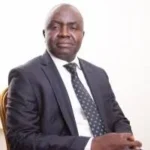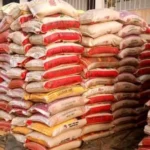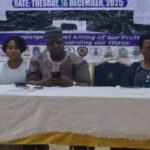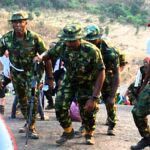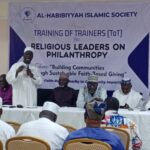By Abigael Joshua, News Agency of Nigeria (NAN)
For decades, the waters of Ogoniland in Nigeria’s oil-rich Niger Delta ran black with crude.
Rivers that once teemed with fish became lifeless.
Farmlands turned barren.
The air thickened with the stench of spilled oil, and for the people; many of them subsistence farmers and fishermen, the land ceased to provide.
Although oil production in the region halted in 1993, the scars left behind endured.
So too did the suffering, residents continued to fall ill from contaminated water, crops failed, and livelihoods vanished.
But today, more than 30 years on, a slow, painstaking effort to restore the land and heal the people is underway.
It is the Hydrocarbon Pollution Remediation Project (HYPREP), a government initiative under the Federal Ministry of Environment.
While progress has been uneven and riddled with challenges, signs of recovery are beginning to emerge.
Historically, the story of Ogoniland is one of environmental injustice and political exclusion.
Between 1976 and 1991, more than 1,000 oil spills were recorded in the area, decimating ecosystems and displacing communities.
In response, the late Ken Saro-Wiwa and the Movement for the Survival of the Ogoni People (MOSOP) mobilised peaceful resistance, calling for environmental protection and local autonomy.
The federal response was brutal.
In 1995, Saro-Wiwa and eight other Ogoni activists were executed by the military government, prompting international condemnation and Nigeria’s temporary suspension from the Commonwealth.
A decade and a half later, the United Nations Environment Programme (UNEP) published its 2011 Environmental Assessment of Ogoniland.
The report was damning, hydrocarbons had penetrated the soil to depths of five metres, and some drinking water sources contained benzene (a known carcinogen) at levels 900 times above WHO guidelines.
UNEP recommended a 30-year, $1 billion clean-up, the most ambitious environmental remediation project ever proposed in Africa.
Since its formal launch, HYPREP has made some headway.
In several Ogoni communities, the provision of clean water infrastructure has replaced long-standing reliance on polluted sources.
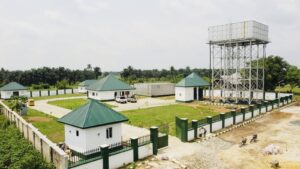 According to official HYPREP data, more than 30 communities now benefit from potable water, reducing the incidence of cholera, diarrhoea, and other waterborne diseases.
According to official HYPREP data, more than 30 communities now benefit from potable water, reducing the incidence of cholera, diarrhoea, and other waterborne diseases.
Healthcare delivery has also seen incremental improvement.
In Buan, Khana Local Government Area, a newly commissioned cottage hospital is providing basic health services to residents for the first time in years.
In Tai, construction on the Ogoni Specialist Hospital is nearly complete, promising diagnostic, maternal, and emergency care.
Medical equipment from Germany’s Siemens Healthineers was recently delivered, accelerating plans for its operational launch.
“This isn’t just infrastructure, it’s symbolic,” said Dr Felicia Nkporo, a public health expert based in Port Harcourt.
“After years of neglect, people are finally seeing some investment in their health and wellbeing”.
Beyond bricks and mortar, HYPREP is investing in the people of Ogoni, especially its youth.
A raft of educational and vocational training programmes has seen more than 5,000 young people trained in diverse fields.
One hundred youths have completed aviation training; another 100 took part in a seafarers’ development scheme.
A postgraduate scholarship scheme supports students pursuing degrees in environmental engineering, public health, and sustainable agriculture.
For many, these opportunities represent more than just skills, they are lifelines.
“Cleaning the soil is important, but building capacity is critical, without local expertise, long-term sustainability is unlikely,” noted Dr Kelechi Onwubiko, an environmental consultant.
At the heart of the HYPREP initiative is land remediation.
Over 1,500 hectares have been designated for clean-up using methods such as bioremediation and soil washing.
So far, 16 of the 20 sites involved in the project’s first phase have been certified clean by Nigeria’s regulatory authorities and returned to host communities.
Stakeholders say environmental recovery is slow, but noticeable.
According to them, pilot crops planted on remediated land are beginning to thrive, offering hope to farmers.
In addition, shoreline protection and mangrove replanting, essential to restoring coastal biodiversity are underway.
The Bloody Cockles Project, for example, is helping revive traditional fishing practices once thought lost to pollution.
Notably, more than 2 million mangrove seedlings have been planted across 560 hectares, now referred as the world’s largest mangrove restoration effort.
This exercise has been led by 540 local youths and women, placing communities at the centre of restoration.
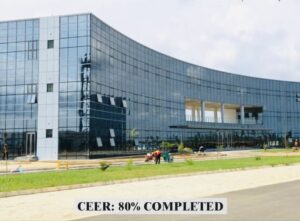 In Wiiyaakara, Khana LGA, and Nsisionke Ogale in Eleme, the newly established Centre of Excellence for Environmental Restoration (CEER) is emerging as a knowledge hub.
In Wiiyaakara, Khana LGA, and Nsisionke Ogale in Eleme, the newly established Centre of Excellence for Environmental Restoration (CEER) is emerging as a knowledge hub.
Designed to foster home-grown research and innovation, CEER aims to train youths and women in environmental technologies while reducing conflict and creating employment.
“This centre is the future,” said a HYPREP official. “It will drive local solutions to global problems, beginning with pollution and ending with resilience”.
Meanwhile, the 132KVA Ogoni Power Project promises to transform livelihoods through reliable electricity.
For residents like Josephine Gbaranor, a textile dyer in Gokana, the development is long overdue.
“I spend thousands on fuel every month, steady power would change my life and allow me to hire others,” she noted.
Albeit these gains, the project has not been without controversy.
Civil society organisations, including the Centre for Environment, Human Rights and Development (CEHRD), have raised concerns over delays, lack of transparency, and insufficient community engagement.
“There must be urgency, transparency, and inclusive decision-making,” said Godwin Uyi, CEHRD’s Programme Director.
“We must not replace the silence of oil companies with bureaucratic indifference”.
Environmentalists have also called for HYPREP to integrate climate adaptation strategies, arguing that sea-level rise and changing rainfall patterns pose new threats to already vulnerable communities.
Appointed in 2024, Prof Nenibarini Zabbey, a respected marine ecologist and environmental advocate is now leading the project.
He has acknowledged past failings, including poor oversight and use of substandard contractors.
In response, contracts have been revoked, audit protocols strengthened, and quality control tightened.
Zabbey confirmed that HYPREP now undergoes annual independent audits and that UNEP’s exit from the project was procedural, not a sign of withdrawal or dissatisfaction.
According to Prof. Ahmed Salisu, a sustainable development expert at Ahmadu Bello University, what is unfolding in Ogoniland today is not merely a technical clean-up, but an attempt to right historic wrongs.
“It is about restoring dignity to dispossessed communities and transforming a region long synonymous with neglect into one defined by resilience.
“HYPREP is more than an environmental project, it is a moral reckoning, a national pledge to correct decades of injustice,” he said.
For Ogoniland, the journey to full recovery may yet take decades, but with each restored waterway, rehabilitated school, and empowered youth, a new narrative is beginning to take shape. (NANFeatures)


